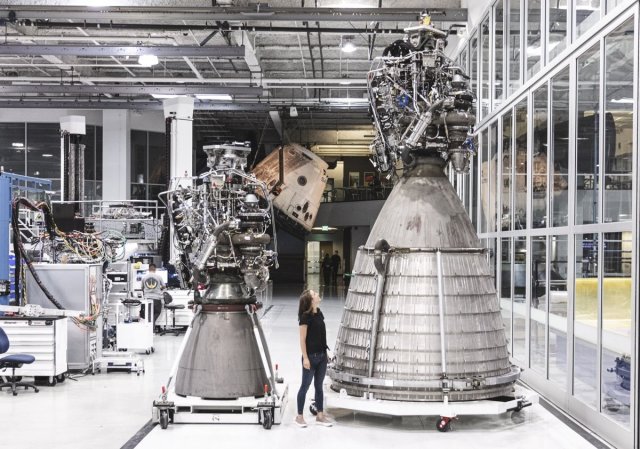Elon Musk's space company is sometimes jokingly called pyrotechnic — so often its products explode during tests. A couple of recent incidents at the test site in the city of McGregor only confirm this glory. The fans of cosmonautics did not have time to set up an online broadcast from this location, as they captured two explosions in a row with an interval of only tens of hours.
At first, an unplanned (or unforeseen) rapid disassembly (RUD — rapid unplanned/unplanned/unexpected disassembly) occurred on May 9. The Raptor engine managed to work for only four seconds on the vertical stand of the SpaceX test complex near the city of McGregor, Texas. The second "clap" was heard less than a day later already on the horizontal stand and also almost immediately after ignition.
The company does not comment on the incidents in any way. They became known to the public exclusively thanks to the round-the-clock online broadcast of the NASASpaceflight cosmonautics fan team. Near the test complex in McGregor, the cameras of this community appeared less than a month ago and have already brought a spectacular catch. Footage of explosions cut from the stream has been published, for example, on the Reddit Internet forum in the SpaceXLounge section ( 1, 2 ) and in the unofficial SpaceX group on the VKontakte social network ( 1, 2 ).
Since there is still no explanation for the incidents from the company's representatives or Elon Musk himself, all possible versions are just speculation. The most likely option is that we just witnessed SpaceX's proprietary approach, according to which each new development is tested to its limit. Now work is underway on the second version of the Raptor engines, serial copies of which have already demonstrated the ability to produce about 230 tons of thrust. In the future, this indicator should grow by another ten to two percent due to an increase in the pressure in the combustion chamber significantly more than 300 bar.
Achieving such high values requires engines to work at the limit of the capabilities of the materials and technical solutions used. Probably, the engineers have found weaknesses and either a milestone beyond which they cannot step, or a direction for further improvements. In favor of the "normality" of what happened is the fact that work at the landfill in McGregor continues at the same pace. The number of tests does not even think to decrease, which is convincingly proved by the publicly available online broadcast .
Intensive bench tests of the Raptor 2 began last December and since then, from two to seven engine "burns" per day have been carried out at the McGregor test site / ©SpaceX, Waspie_Dwarf
According to an alternative version (where without it) — everything is bad for SpaceX. Especially considering the unusual color of the smoke cloud after the explosions. The company is now preparing for the first orbital launch of its new reusable rocket and space system Starship and it needs engines (39 pieces for the first and second stages). Therefore, the "burning" of the Raptor 2 is going at a Stakhanov pace, and two explosions at once indicate that the units are not fulfilling their task. The idea is that in preparation for such an important event, which will be followed by the certification of the rocket for regular launches, no one will waste resources on experiments with less urgent developments.
Recall that SpaceX's main project at the moment — Starship — is a fully reusable carrier with a target payload capacity of more than 100 tons. The first (Super Heavy accelerator) and second (Starship ship) stages use Raptor oxygen-methane engines. Their first version was installed on prototypes for atmospheric test flights and on a rocket originally assigned for the first orbital launch planned for last year. However, now the second version is being produced, work is underway on the third.
These engines have several key features at once in comparison with power plants previously used in cosmonautics. Firstly, the cycle is closed with full gasification of the components. Secondly, Raptors are conceived as the simplest in production to reduce cost and mass production as much as possible. Finally, thirdly, and most importantly: they should not just be reusable, but not require complex post-flight maintenance. As far as we know, the Raptor 2 already meets most of the requirements set for them and their traction characteristics are currently being improved.

